The language of flowers
Speaking — and actually saying what you mean — can feel like a Herculean task. Writing, then, feels Sisyphean: a few scattered words on a page that point generally in the direction of what you want to say, without ever arriving there. But there are other ways to communicate.
The art of floriography was developed chiefly in the repressive societies of Victorian England. Better known as the language of flowers, young ladies would decode and re-encode messages in the forms of bouquets to friends, foes and lovers. Though flowers had long had a rich symbolism, the Victorians codified these into 'floral dictionaries’, giving a concrete semiotics to the form. Bouquets could thus become bearers of complex messages that might take a whole book to express, by combining distinct combinations of flowers to come to a unique meaning.
We often work with our neighbours at Bloemenweelde to make simple floral installations in our De Clerqstraat store, but we thought we’d take it a little further by sending flowers to the far end of the earth.
We selected a few choice specimens to create pressed flowers in Moebe frames, and sent the images to Canberra-based floral stylist, Rachael Warren. She, in turn, created compositions of her own in response. The language of flowers became, thus, a conversation that spanned half the globe.
White carnations and wax flowers
Luck, purity and openness
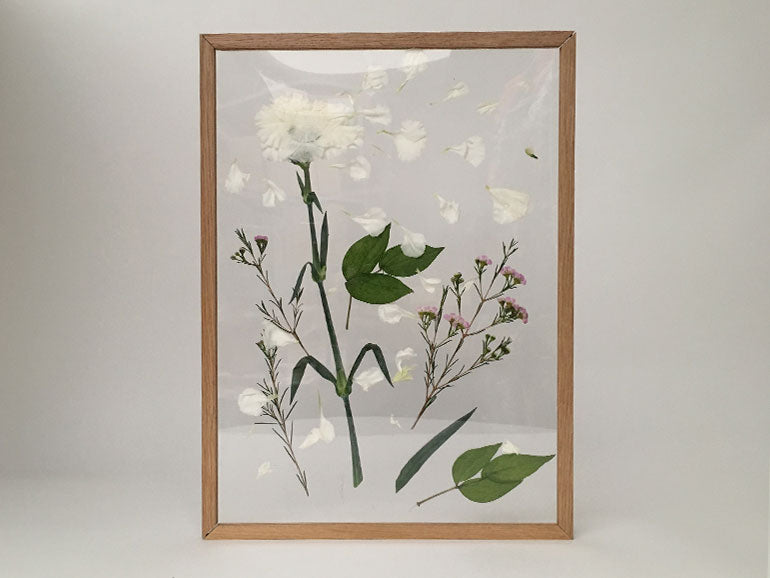
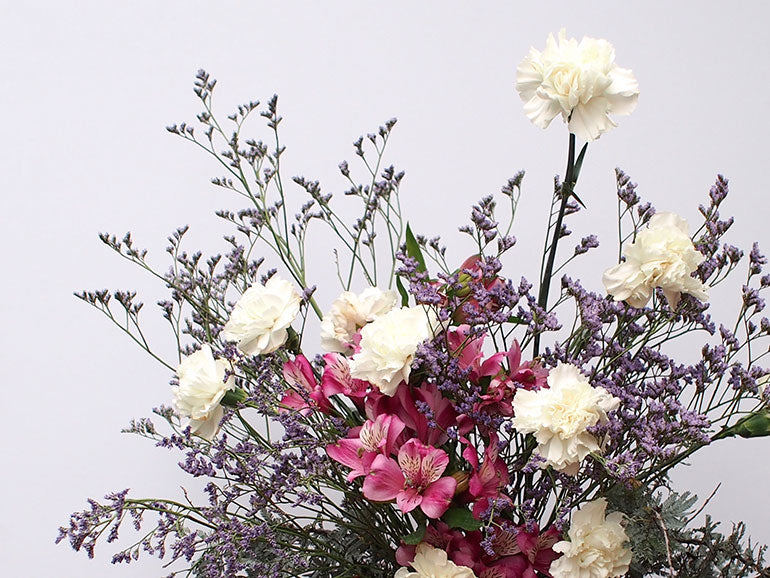
Traditionally given as a Mother’s Day gift, the white carnation also makes an auspicious gift for a new beginning. The freshness of the white has long been a symbol of purity and good luck, and when placed alongside the scrubby wax flower, which represents openness — perhaps for someone beginning a new project?
In her response, Warren built around the carnations with statice, symbolising memory; perhaps suggesting that there is no such thing as a truly new beginning. Still, at the heart of the bouquet heart is the promising glow of fresh, pink Peruvian lilies.
Scarlet chrysanthemums
I love
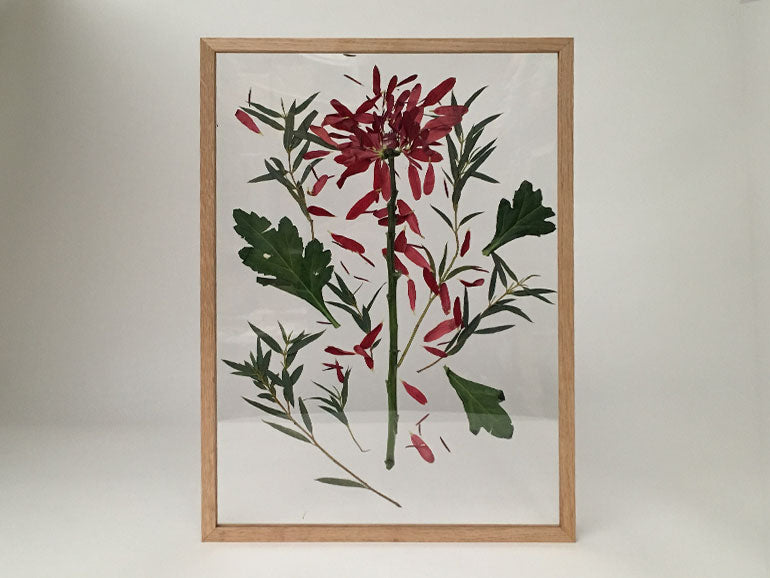
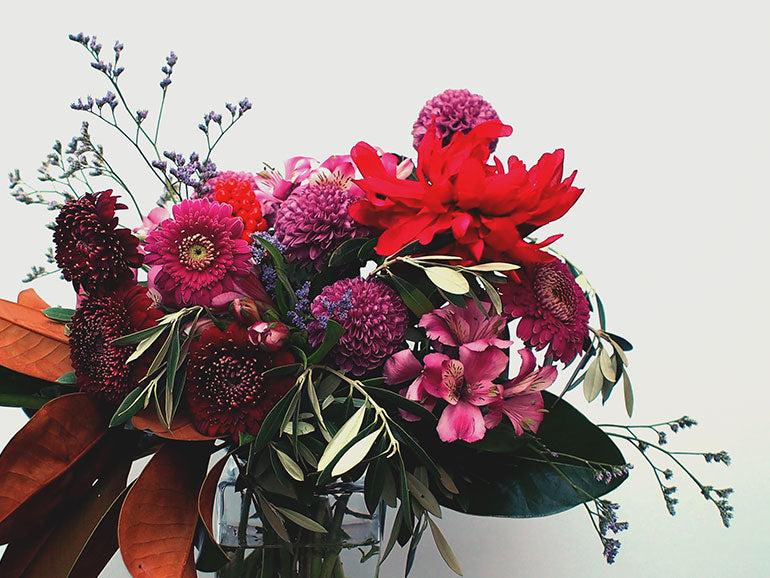
Chrysanthemums are enormously striking flowers, with their bold colours and exaggerated forms. In all colours, they have appropriately bold connotations: truth, in white; betrayal, in yellow. But it is the rich, wine-coloured red carnation which holds our attention in mid-February, simply stating, ‘I love’. This particular chrysanthemum lost a lot of its body as we pressed it between the two perspex panels of the Moebe frame. It was sad, but a fitting reminder, of not only how intense our passions can be, but how fragile.
Warren’s reply is a little coquettish: the chrysanthemums are whole, and paired brightly-coloured gerberas, for innocence. Olive branches suggest a longing for peace, which magnolia branches suggest an affinity with nature. Love is found more easily in the natural world, she suggests.
Anemone, Scotch broom, and anemone
Love lost, humility and mental beauty
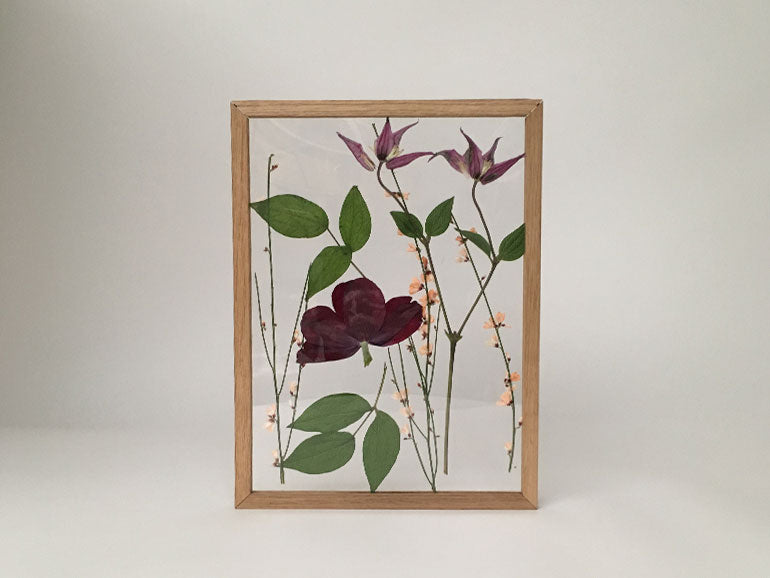

Bouquets don’t always bear good news. Floriography indicates that anemones were flowers to dump someone with, and they were associated with forsaken loves of any kind. Here, a single crimson anemone holds centre stage. Scotch broom, a hardy highland plant, indicates that it’s a lesson well learned, too. But the fragile clematis tells us there’s beauty to be gained through this hardship, too.
Despite being a riot of colour, the bouquet is even more sombre in its meaning: Memory, from the statice; uneasiness from the dahlias. Yellow roses, tucked in the centre, are a classic symbol of love lost. The once-prominent gerberas and olive branches are somewhat hidden now, under the crush of experience.
You can follow Rachel Warren on Instagram at @stemsfromher. And if you're in Amsterdam, don’t forget to stop by our De Clerqstraat store to see our pressings live on in our store window.
All our pressings were made in an A3 Oak Moebe frame or an A4 Oak Moebe frame. You can browse the full range of our products from Moebe here.